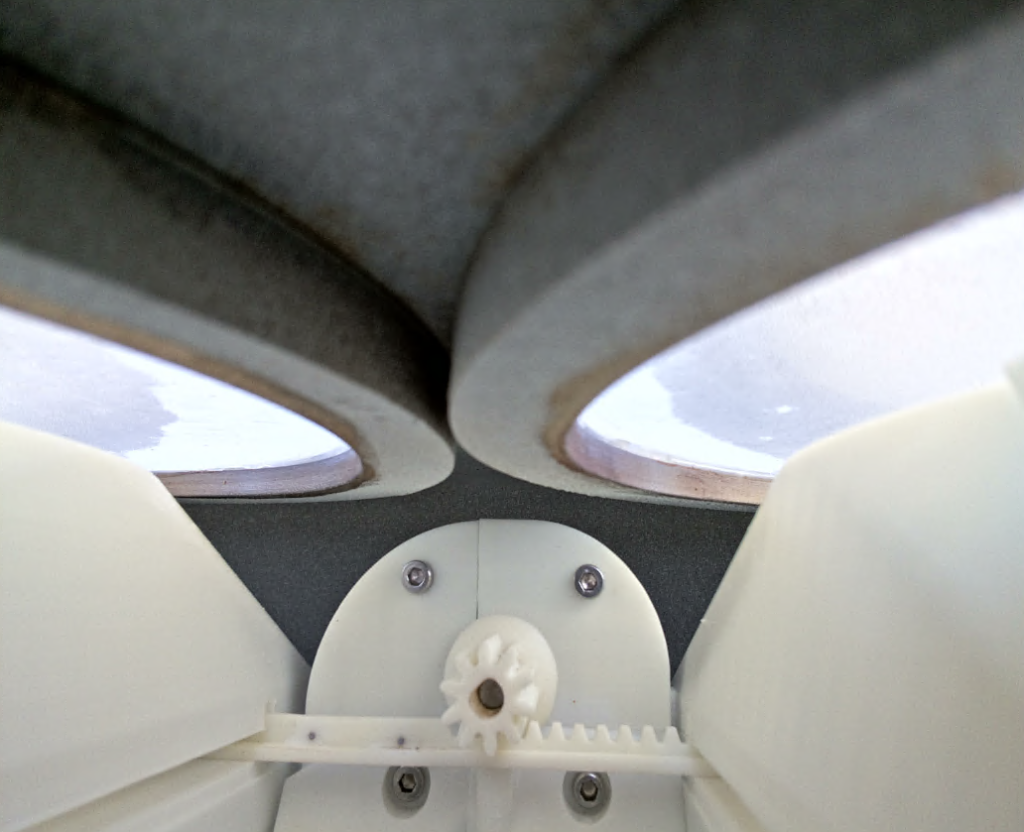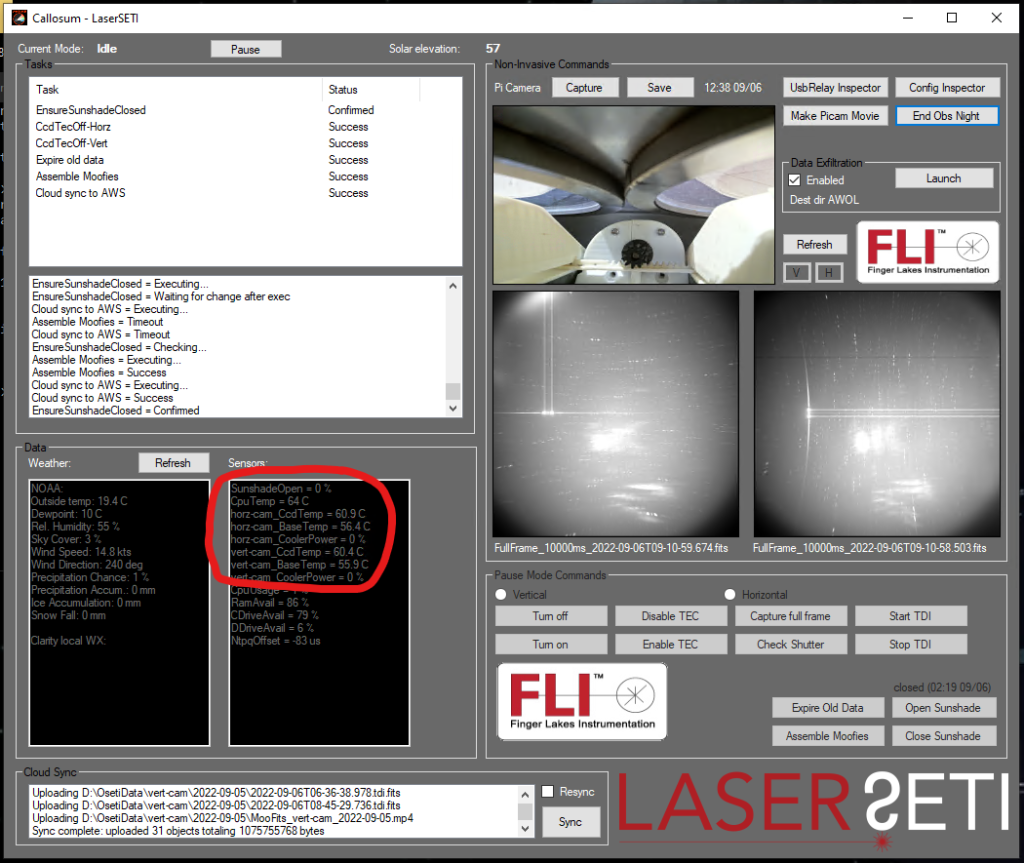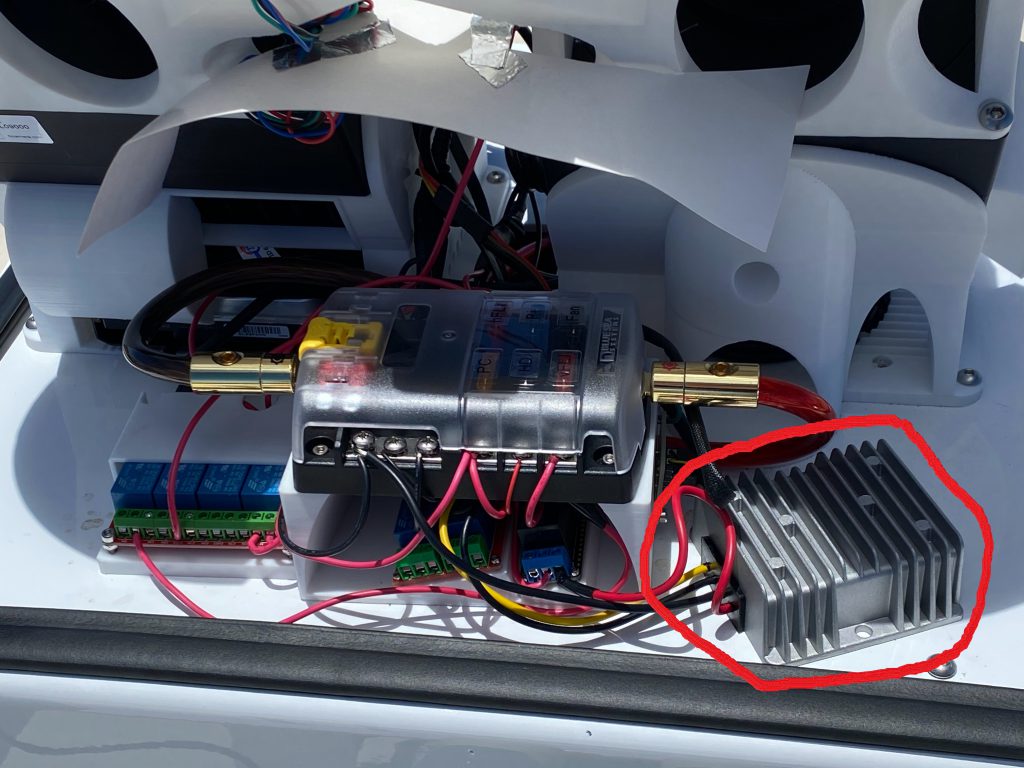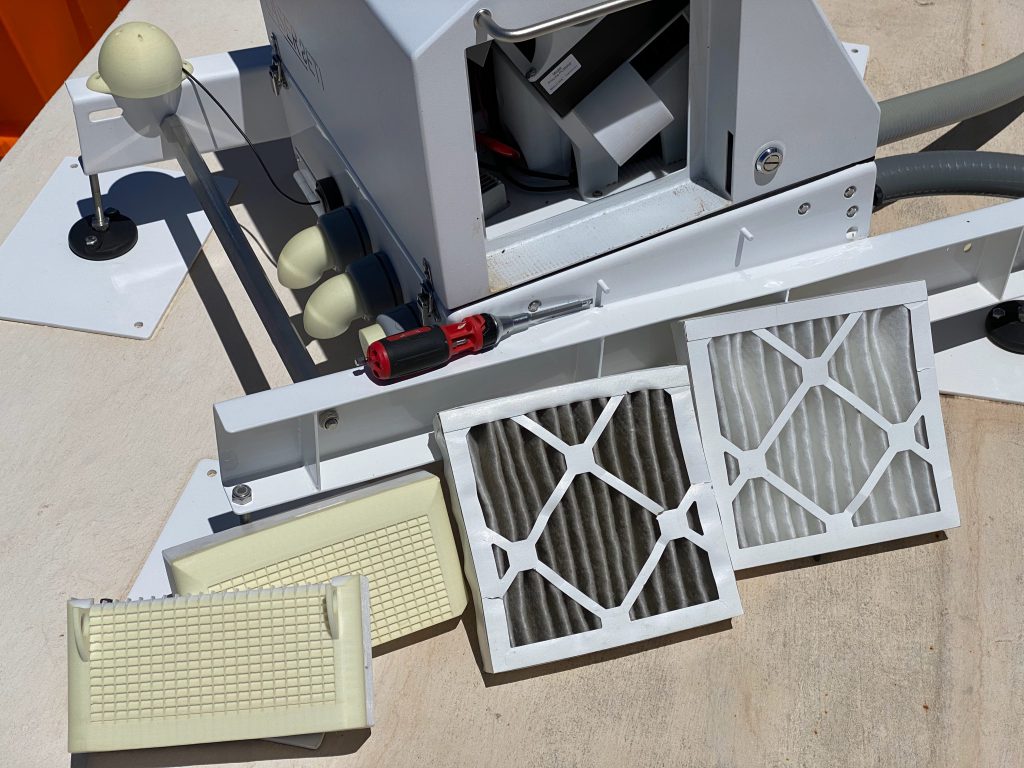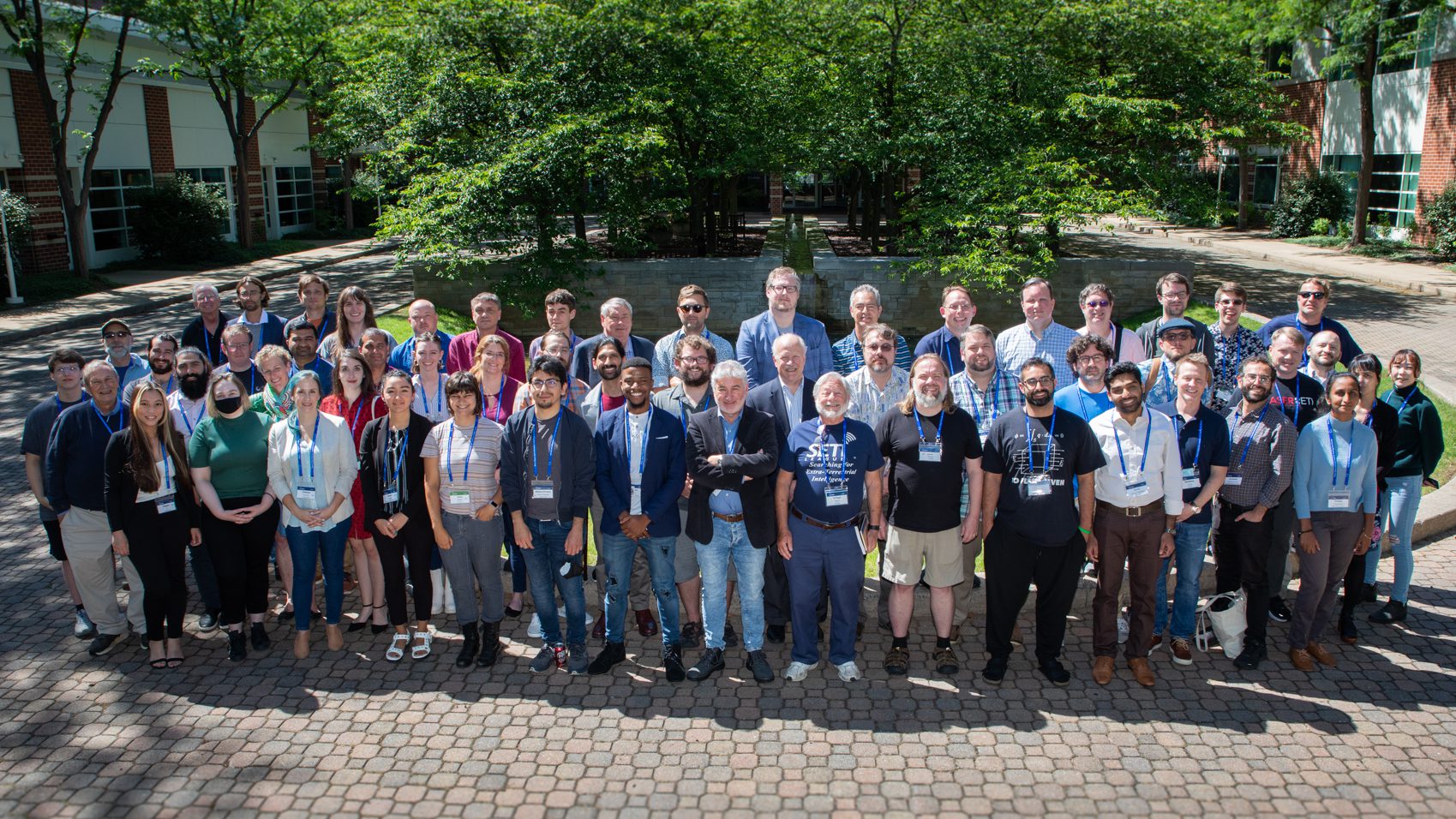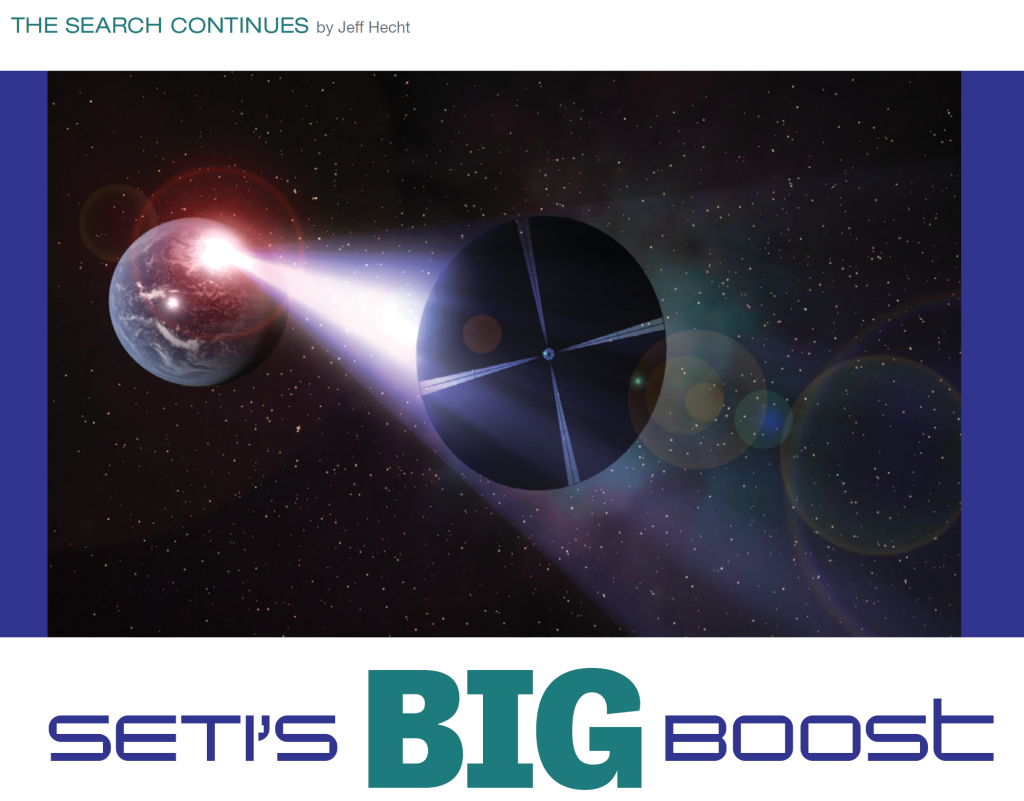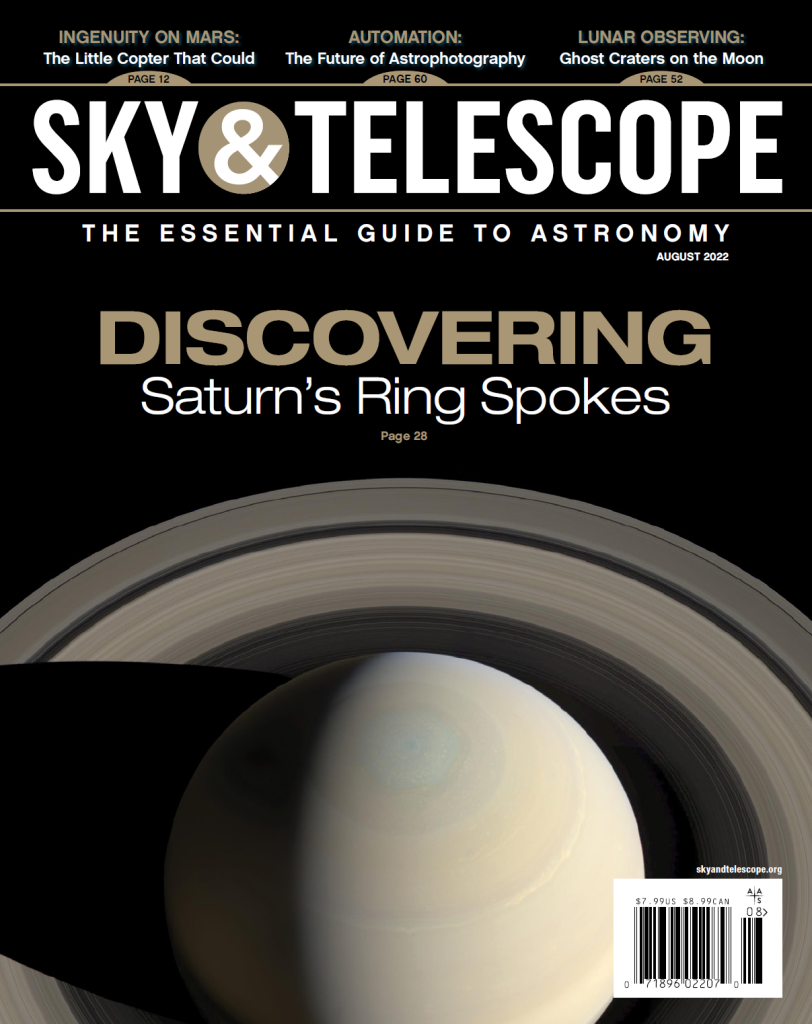It’s a Good Time to Count Your Blessings
It’s still Dec 13st here on the West Coast, and we’re hoping the New Year brings better luck and better skies for LaserSETI and a wonderful 2023 for each and every one of you!
We’ve had a lot of rain in California recently. I can’t remember the last clear night we’ve had. I was excited because the astronomer’s forecast was (and still is) good for tonight, but there must be valley fog or something else low in the sky that it’s blind to. The only photons making it to the instruments tonight are from our Sun, bounced off our lovely but obscured Moon.
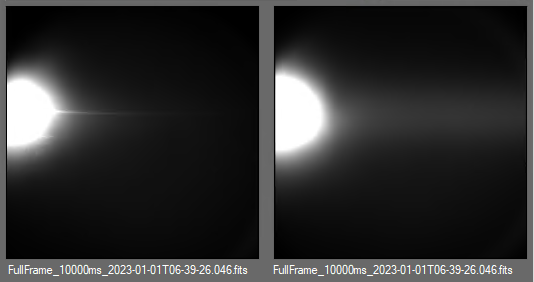
And, you might’ve noticed, it’s been a long time since even the PiCams have updated from IFA on Haleakala in Maui. Almost two weeks ago now, there was a large ice storm which knocked out power. You can still see the frost on the instrument windows just before they went offline on the Status page. On Tuesday, we got power back, but only to find there was another internet cable cut somewhere halfway up the mountain, so we’re still without connectivity to the instruments.
It can be easy to get frustrated when things don’t go your way time after time, but I think that’s shows something special about the holiday season and New Years. Everyone wishes things were better, and that’s natural, that’s how we keep making progress. But we all have a million things to be grateful for, to appreciate how we got where we are and what or who is going to help us keep going tomorrow.
So let’s focus on what’s great in the world and in our lives, and leave some greatness to achieve in 2023!
